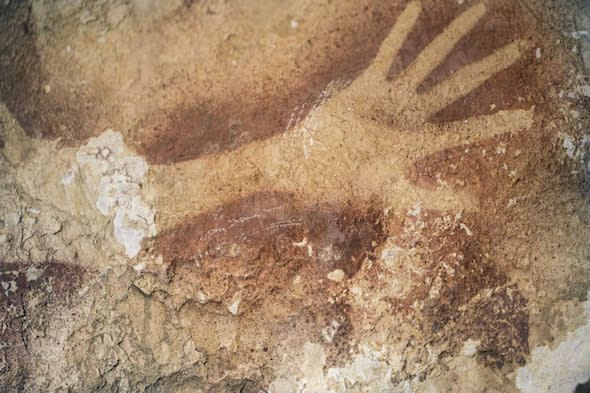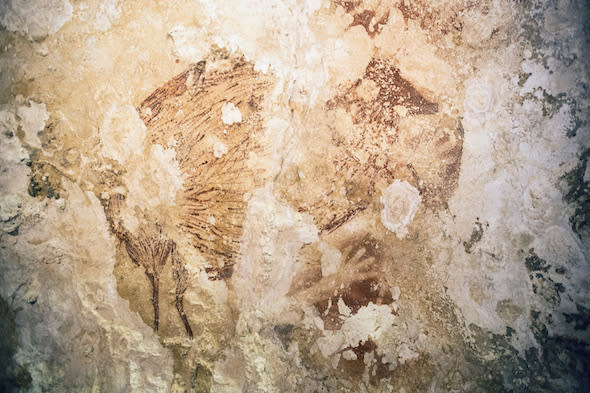Cave paintings from 40,000 years ago discovered in Indonesia

Cave paintings as old as those found in Europe have been discovered in Indonesia, raising new questions about early mankind and the development of art in prehistoric times.
Animal drawings and hand stencils, the earliest of which has been radiocarbon-dated to almost 40,000 years ago, were discovered by a team of Australian and Indonesian archaeologists on the island of Sulawesi.
Currently the world's oldest dated cave art is a red dot found in the El Castillo cave in Cantabria, northern Spain, which was painted 40,800 years ago, not long after modern man arrived in Europe.
The two areas are around 8,000 miles (13,000km) apart and the Indonesian findings, published in the journal Nature, raise questions about where art first arose, according to co-author Thomas Sutikna.
The University of Wollongong (UOW) PhD student, who was part of an Indonesian team that uncovered a new species of tiny human nicknamed "the Hobbit" ten years ago, said rock art was "one of the first indicators of an abstract mind - the onset of being human as we know it".

He said: "Rock art might have emerged independently at about the same time in early modern human populations in Europe and Southeast Asia, or it might have been widely practised by the first modern humans to leave Africa tens of thousands of years earlier - if so, then animal art could have much deeper origins."
The team found 12 hand stencils and two "figurative animal depictions" at seven limestone cave sites in the south west of Sulawesi and dated them by measuring radioactive isotopes in small stalactite-like growths called "cave popcorn" which had formed over the art.
Using this high-precision method, known as U-series dating, samples from 14 paintings at seven caves were shown to range in age from 39.9 to 17.4 thousand years ago. As the cave popcorn grew on top of the paintings the U-series dates only provide minimum ages for the art, which could be far older.
While cave art is found around the world, that in Europe had been thought to be the world's oldest, with paintings dating back more than 30,000 years found at several sites.
The art in Cantabria is so old that it has been suggested they may have been made by Neanderthals who came to Europe before modern man.
Other ancient paintings have been found in Gibraltar and most famously at the Lascaux Cave in the Vezere Valley of France's Dordogne region, which contains nearly 2,000 figures of animals, human figures and abstract signs painted onto the walls with mineral pigments.
The Indonesian cave art was first recorded in the 1950s but its age was until now unknown.
The archaeologists from UoW and Griffith University in Brisbane found that a hand stencil in a cave in Maros on Sulawesi was 39,900 years old, making it the oldest of its type in the world.
They also found a painting of a babirusa or pig-deer, which was at least 35,400 years old, making it, they say, among the earliest dated figurative depictions in the world, if not the earliest.
The paper's co-author, Dr Anthony Dosseto, director of the Wollongong Isotope Geochronology Laboratory, added: "Europeans can't exclusively claim to be the first to develop an abstract mind any more. They need to share this, at least, with the early inhabitants of Indonesia."
Related articles
French cave paintings are work of three-year-olds
Britain's oldest town: surprise discovery
Stonehenge seeks manager to look after prehistoric stones





